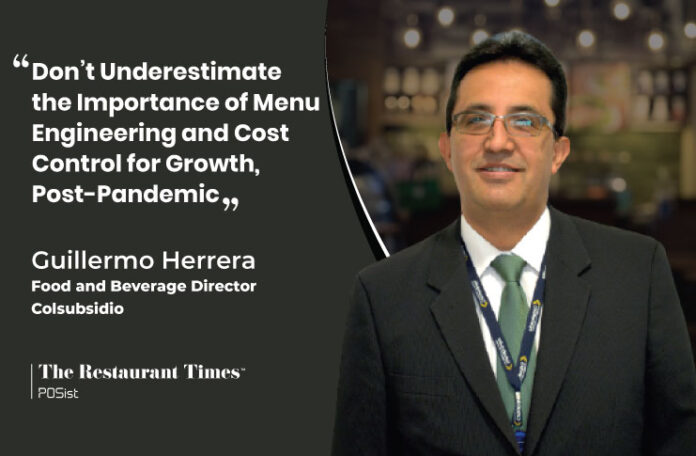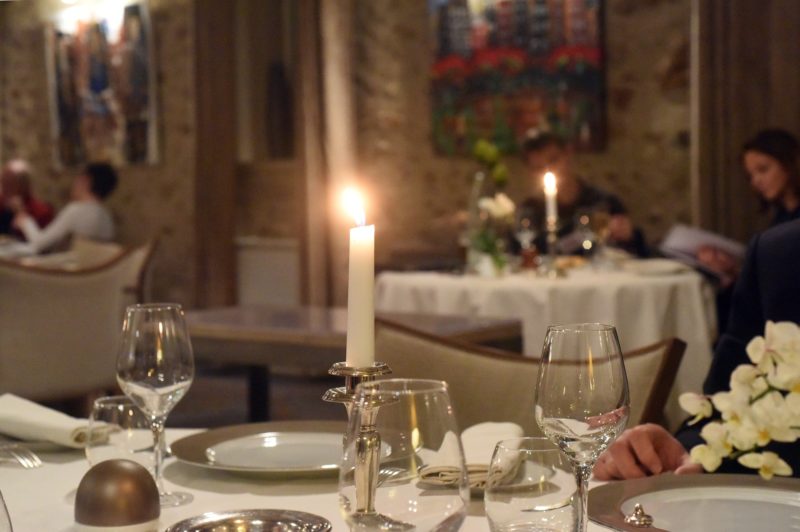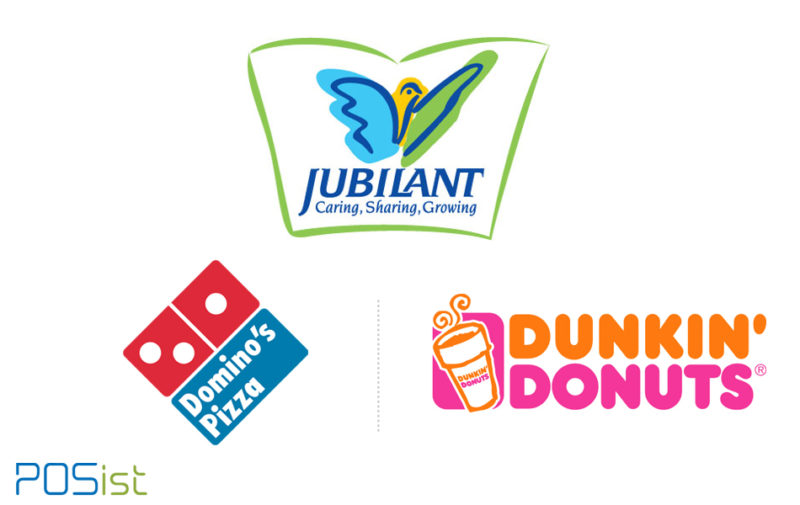Guillermo Herrera is a food and beverage manager at Colsubsidio, Colombia, and a member of the Association of Food and Beverage Managers. He comes with more than 25 years of experience in informal and full-service operations in national and multinational corporations. Guillermo has worked as a food and beverage director in compensation and as a catering manager. He has a dual Master’s Degree in International Hospitality and Tourism Management from Oxford Brookes University, and Food and Beverage Management from the Externado University of Bogotá, Colombia, among other professional qualifications.
In Conversation With Guillermo Herrera, Food and Beverage Director, Colsubsidio
TRT – Tell us a little about your diverse experiences in the food and beverage industry, what is your key area of focus with Colsubsidio?
Guillermo Herrera – I have more than 30 years of experience in the operation and management of food services across different modalities and volumes and types of food services. I also had the opportunity to lead a gastronomy academy as Director for Colombia and Ecuador. I believe that in recent years, my experience is focused on the development of new food and beverage businesses, that is, the structuring of the entire service unit on different fronts. At Colsubsidio, we operate about 100 food and beverage outlets serving different markets. On the one hand, there is hospital food, for clinics, hospitals, medical centers, we also have food for schools, school restaurants, kindergartens, including private and public district schools. We analyze catering for companies, table service restaurants, coffee bars, self-service, vending machines, vending trolleys. In short, a multiplicity of services adds up to approximately 16,000 daily production rations.
TRT – How are Colsubsidio’s various initiatives creating opportunities for the food and beverage industry? What do you think?
Guillermo Herrera – We are developing very interesting products since COVID and all that the pandemic has brought to us. Some of the developments that we have been obliged to generate in the short term are virtual cooking workshops, and wine tastings, which we carry out for all the workers of the affiliated companies in a complementary way. We are also developing kits of pre-prepared menus, that is, we send the raw material washed, disinfected, and vacuum-packed with a QR code so that people can see the video of how the product was prepared and the written recipe, and also so that they can make it at home. We can also use it during the virtual workshop prayer.
Another line that we have developed that is very interesting is the delivery of hot food on a massive scale for workers. We have an agreement with local companies where they inform us, according to their production plan, how many workers are going to be there each day of the week. We send a totally different menu each day. Finally, we have also developed special catering for company executives where we bring their daily lunch solution with waiters and glassware and prevent them from having to go out and look for lunch in restaurants where they can get infected. So these are developments that are in line with this new need.
TRT – As someone who has worked in restaurants, institutes, or NGOs, how do you see the evolution of the restaurant industry in all these years? How was your experience in these years?
Guillermo Herrera – The food industry is growing at a very high pace and particularly in Colombia it represents more than 800,000 food and beverage establishments. More than 1.5 million people are linked to food services and that represents more than 4% of the country’s Gross Domestic Product. The impact on the growth that had been occurring was very positive. The arrival of international chains, the development of new food concepts, the emergence of a strong middle class in Colombia, have played a key role in the development of the industry.
After the outbreak of the pandemic, the situation has not been good, about 48 thousand restaurants have had to close permanently. This has left more than two hundred and fifty thousand people without work and now we have a very complex social situation. I think Those restaurants that had the financial strength, experience, and flexible cost structure that could allow them to withstand this situation, survived. However, a significant number, especially small, entrepreneurial restaurants, unfortunately, had to close. So, it is a cycle we see, as again the economy seems to be picking up but we are still not at the previous levels.
TRT – So we have seen you writing a lot about innovation and efficiency in restaurants. You also wrote a very interesting article on menu engineering recently where you mentioned comprehensive analysis and profitability and the margin contribution formula, can you elaborate on that?
Guillermo Herrera – I wanted to contribute by helping local businesses come out of a crisis situation in the middle of the pandemic. That’s why I chose to start writing. I think it was a way of sharing knowledge to support those who were trying to understand and survive in the business and then in the pandemic, so I have been regularly writing about it. In particular, I was writing about menu engineering, it is one of the many important topics in the industry that I think is critical for those who operate foodservice to be aware of. Menu engineering fundamentally seeks to evaluate each of the dishes on our menu against 2 criteria: Popularity and profitability and these for two criteria there is a formula for calculating when a product is considered popular or not popular and when it is considered profitable or not profitable and that to classify all the dishes for the preparations on the menu of my restaurant into four categories. Star products are those that are profitable and popular,
Puzzle products are those that are profitable but not popular. The Workhorse items are those items that are popular but not profitable and finally the Dog items which are neither popular nor profitable and should be quickly removed from our menu.
TRT – Staffing and recruitment is one of the key challenges facing the restaurant industry, especially during COVID times as you explained in your article on the 5 fundamental staffing steps and development tools for rate analysis. Can you elaborate on it?
Guillermo Herrera – One of the fundamental issues is cost. For example, after raw material cost the biggest overhead for most restaurants is labor cost. So here the target is to bring the labor cost to the same level that you are projecting in your budget. Sometimes we don’t operationalize that in an easy way. So my purpose in writing is to educate readers that they must know what the hourly sales volume of their restaurant is and know what the average consumption ticket of customers is. If I have this information, which can be provided by the software, obviously the register, I can find out the number of customers served per hour. When I have this information, I can identify, based on the service standard, how many waiters I need every hour, throughout the day. When I have identified how many waiters I need, I multiply it by the hourly value of this waiter and I can have the hourly labor cost throughout the day. Finally, we divide this labor cost percentage by the sale and we can clearly establish if each hour of the day I am reaching the labor cost budget. It is a relatively simple exercise but it requires actual sales and average ticket information.
TRT – What do you think are the very important factors to start a perfect restaurant?
Guillermo Herrera – There are several elements. In my experience, I see that entrepreneurs focus a lot on the location, the ambiance, the menu and leave aside the technology that will be associated with it, they leave aside the study of their target client, they leave aside the need to have information in real-time and they leave aside the administrative controls. I think they have to reach a balance; all the issues are fundamental, the location, the menu but also the administrative process that allows me to ensure the financial viability of the business. Another aspect that I find very common is that entrepreneurs do this project with money from third parties. I recommend that when starting these projects, more than half, if not all, of the investment should be made from their own resources because the level of survival of these establishments is very complex. In the first year, more than 70% of the businesses close, and less than 20% will survive the 5 years. So if it doesn’t work, I lose the business, but I am left with significant debt. The project should be done with your own resources initially.
TRT – What do you think about the future of cloud kitchen in Colombia or worldwide?
Guillermo Herrera – It is a new way of operating. It does indeed have some advantages, it reduces the operating costs for those who join this model and allows them to reach some target markets quickly. I think there are some important advantages. Some situations to take into account is that we need to give much more control of these hidden kitchens because some of the state entities need to supervise, to check how the quality processes are being carried out and not to be taken care of. It is not so much to the parochial growth of these kitchens. So thinking about the end customer or the consumer, it is important to ensure the quality of the products that come out of these hidden kitchens. I think that is a big risk.
TRT – If you had a choice between a cloud kitchen or opening a QSR, which would you choose?
Guillermo Herrera – If I am starting up a cloud kitchen it allows me to lessen the levels of investment, it allows me to try different concepts, if one doesn’t work, I can quickly move to the other as long as it is supported by a virtual platform that allows me to do this. It’s a big advantage over a fast food restaurant because you have to position it and you can’t be changing the concept all the time. There is a bad investment that will probably be much higher, you will need a much more costly venue so in that situation, I would prefer the hidden kitchen while positioning a new food concept.
TRT – We read your recent article published in Gastro Rama magazine about standard food yields, what gave you the idea to write about such a prevalent topic?
Guillermo Herrera – I think that as well as menu engineering, labor cost, and standard cost performance are fundamental in the food operation. So I grabbed the opportunity to share knowledge with those people, in particular, the standard performance or the elements associated with the standard recipes, they include the standard yields, the standard cost of the preparations, and the standard portioning. So anything that makes sure that at the end of the day the cost of preparation remains the same and that I don’t lose contribution margin. Sometimes people believe that it is better to have the product with the lowest percentage of raw material cost, but the most important thing here is to have the products with the highest contribution margin. A professor once told me that you go to the supermarket and you buy with money and not with percentages. So that’s why it’s important to identify the products with the highest contribution margin and ensure that the cost throughout the process is maintained.
TRT – As a market expert, what would you advise new restaurateurs on how to get the restaurant business off the ground.
Guillermo Herrera – First of all, it is important to have a clear concept and that clear concept of gastronomy must be validated with a targeted audience. Sometimes, we find entrepreneurs defining the preparations themselves when it is the targeted audience that needs to be defined. I think it is important to be clear about that.
Secondly, an excellent location, if it is going to be a shop, the location should be fundamental, and thirdly, to have an administrative control system for raw materials and yield to ensure the financial viability of the business. Do not expect a result quickly, surely the maturation of these concepts can take several months. But also if eventually, the concept does not work quickly, close down or change it to avoid significant losses.
TRT – In your opinion, what is the best way to market a restaurant?
Guillermo Herrera – Today, electronic media have allowed us to reduce the cost of positioning our restaurant. Very few have access to a budget big enough for TV commercials. Traditional media such as a newspaper can also cost a lot. But the platforms or social networks today allow us to reach many more customers. I have to be very clear, clear in simple language in an attractive way. But the business model doesn’t matter if the quality of the food is not consistent. I think that doing it virtually and electronically does not help a lot and cheapens the investment.
TRT – What was it like for you through Covid-19, how did you manage to keep the business going during the pandemic?
Guillermo Herrera – It was a very complex situation and the decrease in revenue was more than 50% compared to 2019. Some of the operations were kept open, particularly food services for hospitals and clinics due to the same situation that occurred and some lines of food snacks for workers who were still at home or in production plants, I think these lines were kept open, others were closed. The company decided, as part of its social responsibility not to terminate any contracts. In other words, absolutely no one was made redundant, people were working on different projects, they have relocated to other areas during the time that the points of sale were closed, and then once we managed to recover, they returned to their jobs. This was a great success, a great commitment on the part of the team, and today we have fortunately recovered practically all the jobs.

















